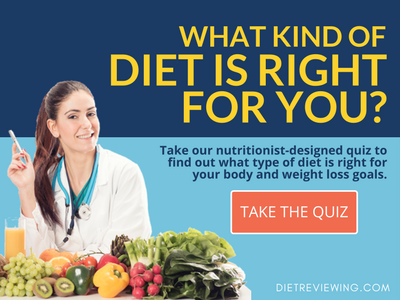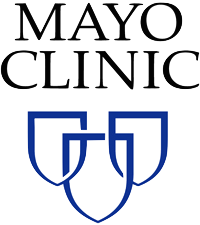
Mar 20, 2020 | Disease Prevention Diets, Low Fat Diets
The Mayo Clinic Diet is a lifestyle strategy designed to help to remove the complexity involved in trying to lose weight in a healthy way. While healthy weight loss may sound as though it’s a pretty straightforward effort, once you get started, the amount of information available can easily become overwhelming. From food groups to macronutrients and from cardio to strength training, there are many details to consider.
The goal of this strategy is to make it easier for people to live a healthy lifestyle. The Mayo Clinic Diet is meant to provide people with confidence in knowing that the recommendations are made from experts at a reputable medical and health organization. Through this strategy, people can avoid fads and crash diets while improving the relationship they have with what they eat and with their regular activity level.
Why Was the Mayo Clinic Diet Developed?
Interestingly, while the Mayo Clinic Diet was designed to get right to the heart of the matter and provide people with directions to lose weight while living a healthy lifestyle, the timing of the creation of the diet was not necessarily chosen by the organization. Instead, there were so many unofficial versions of the diet already circulating under that name, they decided it was time to create a legitimate, official one that people could trust.
What is the Mayo Clinic?
The Mayo Clinic, the prestigious Minnesota-based organization. It is a not-for-profit organization focused on bringing health education, research and clinical practice together. It currently employs over 4,500 physicians and scientists in addition to 58,400 allied health staff and admin staff.
Publishing a Book for Common Sense Recommendations
The organization created a diet and published a book under its name in order to provide a common sense, practical and healthy way to eat nutritiously, get in shape and lose weight. It is highly user friendly and features a range of tips, recipes, pictures, graphics and additional support information to simplify weight management.
Replacing a Fad Diet with an Official Weight Management Strategy
According to the diet’s medical editor, Donald Hensrud, MD, the fad diet bearing the Mayo Clinic’s name had been circulating for years and they decided it was time to put things right with an actual healthy weight loss plan that people can actually use.
The unofficial, phony version of the diet involves consuming a low-carb, high-fat eating strategy. It promises that following this and eating grapefruit, which it claims to have nearly miraculous powers for fat burning, will skyrocket weight loss. The plan is followed for twelve days before there are two days off and then back on again. This is repeated ten times for what the diet claims will bring 50 to 55 pounds of weight loss.
On the other hand, the legitimate Mayo Clinic Diet provides a medically reviewed, scientifically sound long term weight loss strategy. The focus on building healthy eating and fitness habits that will be maintained for a lifetime in order to provide weight management as a lifestyle and not just over the short term. The goal isn’t to choose certain foods or food groups as being better or worse than others. Instead, it promotes overall wellness and understand how to incorporate health into a real person’s lifestyle.
What does the Mayo Clinic Diet Recommend?
It has a nutrition component, a fitness component as well as a preventive medicine component. That way, it’s not just focusing on getting the pounds off. Certainly, that’s a factor, but the aim is to do so healthfully so that it helps with overall health. Reducing weight in a healthy way is an important path to preventing many types of chronic disease and illness. This diet recommends eating according to the Mayo Clinic’s Healthy Weight Pyramid, boosting physical activity, keeping up healthy lifestyle habits, defining and achieving realistic goals and keeping up motivation levels.
Overall, the Mayo Clinic Diet is based on the foundation recommendations that are already being made by doctors and other health experts. It uses government data and solid research to back up its recommendations. That said, what makes it different is that it applies this data in a practical way. It provides people with ways they can use that information in their real life.
Over time, people following this strategy are meant to regularly improve their choices for nutrition, exercise and overall wellness.
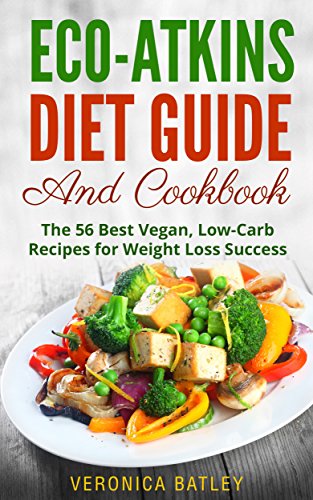
Jan 3, 2020 | Disease Prevention Diets, Low Carb Diets
The Eco-Atkins Diet is a weight loss strategy that was developed to provide vegetarians and vegans with an option that is meant to work as an alternative to the Atkins Diet. Like the meat-focused Atkins Diet, Eco-Atkins is also centered around a low carb, high protein eating strategy.
High Protein, No Meat
This vegetarian version of the Atkins Diet was first developed by researchers in Toronto, Canada, at St. Michael’s Hospital. Their goal had been to see whether or not a high protein vegetarian diet could bring about a reduction of both body weight and bad (LDL) cholesterol.
The research team came up with the Eco-Atkins Diet in order to respect the same protein to carb ratio as the original diet, while replacing the animal protein – which was high in fat – with a vegetable protein that is typically lower in fat. This protein was mainly in the form of gluten and soy.
What the Research Said
The results of the study were published in the Archives of Internal Medicine, when it found that the diet brought about an average of 8.8 pounds in the first four weeks, improved blood pressure, triglyceride and cholesterol levels. Bad cholesterol improved by 0.6 percent, which was significant, particularly for that amount of time.
How to Follow the Eco-Atkins Diet
The Eco-Atkins Diet requires dieters to eat foods that are made up mostly of protein, healthy fats and carbs from high fiber vegetables. Around 30 percent of the daily calorie intake comes from plant proteins, about 45 percent comes from vegetable oils, and another 25 percent from carbohydrates. Foods most commonly consumed on this diet include healthy fats, beans, soy foods, seeds, nuts, fruits, no-starch gluten products, vegetables and fruits.
As meat is excluded from Eco-Atkins, protein sources are typically soy beverages, gluten, soy burgers, tofu, and vegetarian alternative versions such as breakfast links, bacon and deli slices. Other sources include nuts, certain cereals and vegetables. There is an emphasis placed on certain vegetables over others, with a preference for viscous veggies such as eggplant, okra and other low starch options.
Fats Preferred for the Eco-Atkins Diet
The good fats preferred in this diet include olive oil, canola oil, nuts and avocado. Carbs are meant to come exclusively from cereals, vegetables and fruits. A small amount of barley and oats are permitted. However, enriched white flour based foods and sugary foods were banned, such as white rice, white bread, potatoes, and the majority of baked products such as cakes, muffins and cookies.
Despite the fact that following Eco Atkins Diet strategies does help some dieters to improve their overall nutrition, the improvements in this and in weight loss were not all that much better than other nutritionally balanced weight loss diet plans. It is primarily the cholesterol improving benefits of this diet that makes it stand out from other balanced vegan or vegetarian diets.
Which Atkins Version is Better?
A former president of the American Heart Association, University of Denver professor Robert Eckel, MD, calls both the Eco-Atkins Diet and the Atkins Diet too restrictive for the majority of people to continue following over the long term. That said, between the two, it was the vegan and vegetarian version that was labeled as better by Dr. Eckel.
Still, whether or not the Eco-Atkins Diet is for you isn’t just a matter of whether or not it is better than the original eating strategy. There are many factors to consider as you decide if you should give this method a try. It is a very restrictive diet and would be even tougher for someone who is not already used to a vegetarian lifestyle.
For many people, that means that the change will be only temporary as most people find it challenging to keep up a highly restrictive lifestyle change over the long term. This risks not only dropping this healthy lifestyle but also returning to an old one that caused the weight to be gained in the first place. Also, after feeling as though a diet such as this one has failed, it can be more difficult to start a new strategy. The disappointment and feeling of failure can become a barrier instead of a motivation.
Beyond that, the Eco-Atkins Diet can also prove challenging to individuals who don’t have a great deal of experience in nutrition and eating a balanced diet without any meat. This can cause a spectrum of potential nutrition problems and related symptoms.
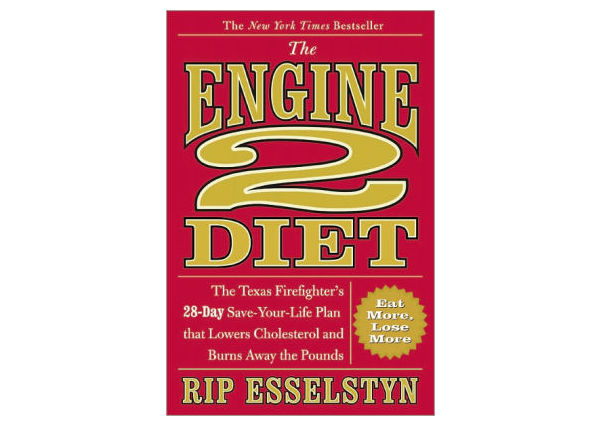
Sep 6, 2019 | Disease Prevention Diets, Vegetarian/Vegan Diets
The Engine 2 Diet is a weight loss and cholesterol reducing strategy developed by Rip Esselstyn. Esselstyn is a former firefighter from Texas and published his diet in a book called “The Engine 2 Diet: The Texas Firefighter’s 28-Day Save-Your-Life Plan that Lowers Cholesterol and Burns Away the Pounds.”
What is The Engine 2 Diet?
This is a plant-based diet which, according to its creator, is primarily focused on eliminating junk foods from an everyday diet.
The Engine 2 Diet refers to junk food as processed and refined foods as well as meat and dairy. Instead, the follower will consume only nutritious foods consisting of whole, plant-based options. The book encourages dieters to learn how to live, eat and cook in a way that is healthy overall.
Two 28-Day Plans
There are two 28 day diet plans that comprise the Engine 2 Diet. The first plan is called The Fire Cadet. That option is a more gradual approach to adopting this lifestyle. The second plan is called The Firefighter, which is far more extreme.
Dieters can choose one or the other of those two plans based on what they feel is most appropriate for their needs and expectations. At the same time, both the Fire Cadet and the Firefighter plan have identical goals. Their purpose is to take four weeks in order to eliminate junk, meat and dairy from a person’s diet. Instead, followers eat only vegetables, fruits, whole grains, nuts, seeds and legumes.
The Fire Cadet Plan
The Fire Cadet Plan is broken down into four weeks.
- During the first week, the dieter must eliminate all refined foods, processed foods and dairy from their diets (keeping in mind that this is the more gradual and moderate plan).
- In week two, all meat, poultry, fish and eggs are eliminated. During week three, any extracted oils (such as conola, olive and coconut) are eliminated.
- During week four, additional vegetables, fruits, whole grains, nuts, seeds and legumes are added to the diet.
This is clearly a restrictive diet, particularly at the beginning. Though it does progressively allow for additional food types to be consumed over time as the dieter moves through the four weeks, it certainly doesn’t mean that the dieter will be returning to a more traditional way of eating by the last week.
Firefighter Plan
On the other hand, the more intense Firefighter plan (that’s right, the Fire Cadet was the gentler of the two) dives right in at week four and continues that lifestyle for four weeks.
Therefore, right from the start, dieters will need to eliminate all animal based products as well as refined and processed foods and extracted oils. These are replaced with the fruits and veggies, legumes, whole grains, seeds and nuts.
The main difference between this plan and the Fire Cadet Plan is that there is a gradual progression in the first plan. This one plunges head-first into the restrictions that will be maintained over the complete 28 days.
Additional Restrictions
Moreover, the author also recommends that anyone following the diet should stop drinking any alcohol for at least the four weeks during which they are introducing themselves to the diet. This is true regardless of which plan you start with.
Engine 2 Diet Resources
To make things easier to understand, the Engine 2 Diet book provides a full list of what can and cannot be consumed at any given time throughout the 28 days. Many people who have followed this diet have found that this additional resource is an important investment into the diet.
The reason is that it can be difficult to know what is and is not allowed when it comes to the specifics. Even if full categories of the rules are understood, there are certain foods that can seem to be in a gray area and the dieter may need clarification.
Workout Plan
Beyond the eating strategy, the Engine 2 Diet also offers dieters an exercise plan. The plan is broken down into the four weeks so that the dieter can know what he or she should be doing as a workout at any given point throughout the 28 days.
Final Thoughts
Overall, this is considered to be a vegetarian or vegan diet, but only over the short-term, making it somewhat of a fad diet as opposed to one that is necessarily geared toward the longer-term.
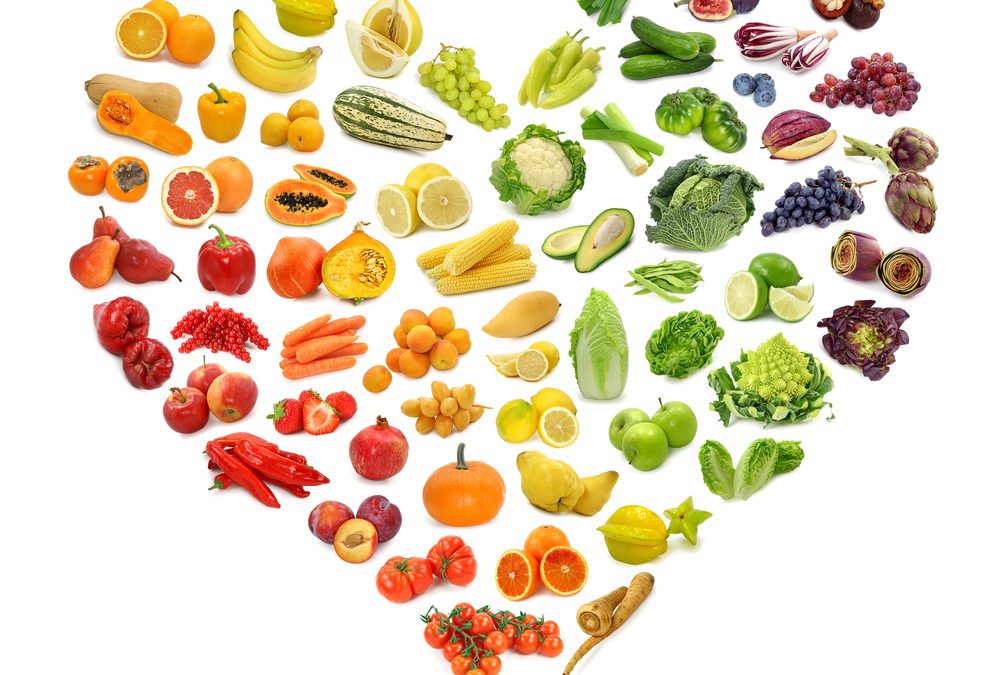
Jul 5, 2019 | Disease Prevention Diets, Low Fat Diets
The TLC diet stands for Therapeutic Lifestyle Changes. It is a type of eating strategy created to help people to be able to effectively reduce their cholesterol levels. The claim is that by keeping up this diet over the long term, you will be able to lower your bad cholesterol (LDL) in a meaningful way. In fact, it states that if you follow it to the letter for six weeks, you are likely to reduce your LDL cholesterol by between 8 and 10 percent.
Who Created the TLC Diet?
The TLC diet was first created by the National Institutes of Health (NIH)’s National Cholesterol Education Program. It is also endorsed by the American Heart Association as being a heart-healthy way to eat in order to reduce the risk of cardiovascular disease.
The main component of this diet is to significantly reduce fat intake, particularly in the case of saturated fat. Saturated fats are the type of dietary fat found in heavy meats, fried foods and full-fat dairy products such as whole milk. Eating more than just a tiny amount of saturated fat has been associated with elevated cholesterol levels. When LDL cholesterol levels are too high, it increases the risk of heart disease, heart attack and stroke.
What Do You Do on This Diet?
The TLC diet typically requires a follower to have to greatly reduce their saturated fat intake while boosting their fiber intake and limiting the amount of dietary cholesterol they consume. According to top medical organizations (mentioned earlier), this can make a considerable difference in reducing high cholesterol levels, even without having to resort to the use of prescription medications in some cases.
In order to follow the TLC diet properly, the first thing you will need to do is find out how many calories you should be eating every day. A doctor or dietician can often provide that advice. From there, it’s important to learn about the types of foods you should be eating and how you should be preparing them in order to enjoy your meals and still stay within your daily calorie range.
How Many Calories Will You Eat?
Most women will need around 1,800 calories depending on age, activity level, weight, height and other factors. Women trying to lose weight may need as few as 1,200 calories. On the other hand, men will need around 2,500 calories based on the same factors, but will need only 1,600 when weight loss is the goal.
The types of foods you will typically eat on the TLC diet include skinless poultry, very small amounts of reduced fat cheese and dairy, very little to no processed or cured meats, lots of veggies, lots of fruits, whole grains and very little – if any – processed foods.
Two Key Guidelines
As the main focus of the TLC diet is to be healthy and keep cholesterol levels where they should be, the foods you eat are low in both saturated fat and natural cholesterol. That said, this is not a low-fat diet. Instead, it also requires dieters to eat an appropriate amount of good fats. These good fats include monounsaturated fats.
Also included among the types of foods you’ll focus on eating with this diet include those high in fiber. Research has shown that diets high in fiber help to promote better heart health and support healthy cholesterol levels.
Overall, there are two key guidelines that TLC diet followers will need to stick to each day. This includes:
- Eating less than 7 percent of your total daily calories in the form of saturated fat.
- Eating less than 200 milligrams of dietary cholesterol.
It’s a good idea to speak with a doctor before starting the TLC diet, particularly if the goal is cholesterol control. If you are taking medication to lower your cholesterol levels, don’t stop taking it just because you are following this diet, unless you have been directed to do so by your doctor.
Are There Banned Foods?
There are no specific foods that must be consumed in order to follow the TLC diet, but many people find that they need to change what they purchase at the grocery store. Depending on the choices that are made, this could mean that you pay more or less once you get to the checkout counter.
While this diet was designed for cholesterol reduction and heart health, some people do lose weight by following it due to the improvements to their overall nutrition.

May 26, 2019 | Disease Prevention Diets
History
The original Ornish Diet was first created in 1989 by Dr. Dean Ornish. It was designed to be followed by patients at risk of heart problems such as cardiovascular disease or heart attack.
That said, the diet has since been updated to be called Dean Ornish’s Spectrum Diet, which is based on similar concepts and targets the same people, but that is focused more on losing weight to lower risk than exclusively living an overall health healthy lifestyle.
The Ornish Diet and Heart Health
When taking into consideration the recent changes made to the recommendations by the American Heart Association, lowering blood pressure guidelines So that people with readings over 130 as their top number and 80 as the bottom number are now deemed as having high blood pressure. Previously, it had been 140/90.
Under these new definitions, about half of all American adults are now within the high blood pressure category. This could make a diet with a focus such as that of the Ornish Diet relevant to far more people than had been the case earlier this year.
What is the Ornish Diet?
In this diet, no major foods are actually banned, but all food groups are labeled with a number. Those in the number 1 category are the healthiest, whereas those in the number 5 category are the least healthy.
The food rating system is known as the spectrum. Moreover, this diet recommends a macronutrient balance of:
- 70 percent carbohydrates
- 20 percent protein
- 10 percent fat.
This makes the Ornish Diet a very low fat diet. This diet does recommend against consuming alcohol and white flour, but it doesn’t necessarily ban those foods.
Why Choose This Eating Strategy?
The goal is to try to eat as many category 1 foods as possible. Anyone eating in this way should naturally find themselves losing weight. The diet also promises that it will help to lower cholesterol levels and maintain or improve arterial health, particularly in the arteries close to the heart. The official website for the diet claims that it can also reverse prostate cancer and diabetes.
How Hard is This Diet?
The rules of this diet are relatively direct and, according to the official descriptions of the Ornish Diet, it may help to reverse heart disease through changes in four primary lifestyle areas: nutritious diet, exercise regularity, stress response, and a loving support structure.
In terms of the amount of effort and difficulty needed to follow Dean Ornish’s Spectrum Diet, this is usually considered to be a moderate level challenge. The difficulty greatly depends on the difference between your current lifestyle and the degree to which you want to adhere to the diet’s recommendations. It could mean anything from regular tweaks all the way to a massive overhaul.
The top struggles usually identified when following this diet usually have to do with having to sharply reduce highly processed foods and fatty meats, among people whose diets have previously leaned heavily toward the consumption of those foods. That said, for people whose fatty meat and processed food consumption is already low, the diet’s changes can occur quite naturally.
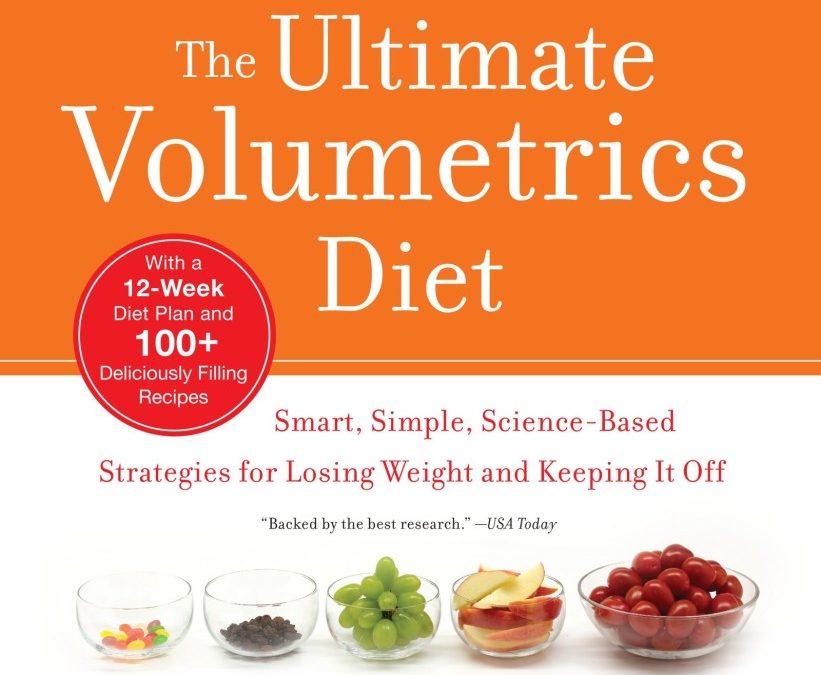
May 21, 2018 | Disease Prevention Diets, Natural Diets
The
Volumetrics Diet is a type of weight loss strategy. It is designed to function as a complete healthier lifestyle that will produce the best possible results. The official claims are that following its strategies will produce 1 to 2 pounds of weight loss per week. Moreover that rate will continue throughout the entire length of the dieting.
Typically speaking, that is considered to be a healthy rate of weight loss. Most doctors don’t recommend that dieters lose more than 2 pounds per week. A steady, gradual rate is usually preferable as it is more likely to stay gone once it has been lost.
What is the Volumetrics Diet?
The primary concept making up this plan is that followers eat high water content foods. Those foods should also be low in calories. It describes foods high in calories as being energy dense. These types of foods are restricted to options that come with health benefits.
The added water and fiber content in the foods that are recommended for highest consumption are meant to improve health and reduce the appetite. While high fiber and high water foods can help to control the appetite, it’s important to consume those options regularly.
Volumetrics Diet Top Foods
The types of foods that are recommended for consumption in the Volumetrics Diet are broken down into four categories.
The first category is very low energy density foods. These include broth based soups, non-starchy veggies, fruits and nonfat milk. The second category includes low density foods. They are starchy vegetables and fruits, low-fat meat, breakfast cereals, legumes, whole grains and low-fat recipes such as chili and spaghetti.
The third category includes medium density foods. These are options such as French fries, pizza, meats, cheeses, cake, salad dressings and ice cream. The fourth category includes the highest density foods in the Volumetrics Diet. These are chocolates, nuts, chips, crackers, cookies, oils and butter.
The preferred foods for consumption in this diet are in categories 1 through 3, with a focus on the first and second. The third category is allowed but in portion controlled amounts. Technically speaking though, there aren’t any banned foods. Despite the fact that it does lean toward healthier options, it doesn’t disallow junk food. That said, it needs to be consumed within the rules.

Volumetrics Diet Foods to Beat Cravings
Dieters are encouraged to eat foods in the form of liquids and pastes as much as possible. The reason is that they tend to contain the highest water content. The water is supposed to help ease hunger pangs.
There is also a focus on beating cravings when following the Volumetrics Diet. Dieters are supposed to listen to their cravings in order to satisfy them. That said, they are supposed to learn healthier and more appropriate ways to satisfy their cravings than what they would typically eat. Therefore, if they would usually reach for chips and dip, they should reach for veggies with hummus, instead.
In this way, the diet provides a similar eating experience. Still, it does so within a lower calorie range.







